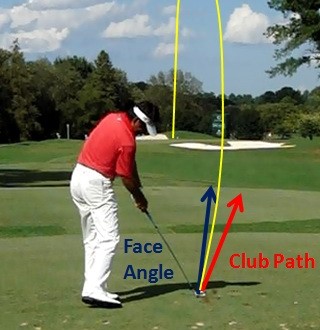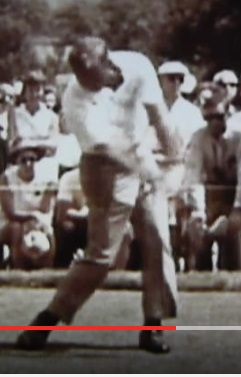Are you starting your swing from a dead stop and expecting your body to instantly jump into the right mode? You really should “Get Your Motor Running” to wake-up your muscles for a more consistent swing. Watching the US Open, I couldn’t help but see Dustin Johnson re-grip his club and tap it on the ground 3 to 5 times before he pre-set his wrists forward and starts his back swing. Sure did work for the US Open Champion.
Following is a video of Dustin Johnson borrowed from YouTube. It shows his preshot routine for both face-on and up the line. Watch for his gripping and tapping waggle as well as his wrist pre-set. This is also an amazing golf swing. It’s a must see.
Recreational golfers tend to move up to the ball and look at it as if we are memorizing the way to keep our head down through impact. The longer we stand frozen, addressing the ball, the tighter our muscles get. Our minds start to wander or focus on a screeching bird or our muttering golf partners. Do this and it will kill your game.
As it turns out most PGA Professionals have their personal way to get their motor running.
Hank Haney does a single back waggle and a little hand shift forward before he swings.
Martin Chuck pre-sets his hands slightly forward as part of his swing but he never talks about it or suggests that his students should do the same when he presents a lesson.
Jason Dufner almost completes a dance routine with his hands before he swings.
Rickie Fowler, Mike Weir and Michelle Wie all complete a quarter back swing waggle. All are rehearsing their flat wrist takeaway (great solution using GOLFSTR+ ) or direction of their preferred takeaway to overcome a historic problem.
Andy Anderson (Golf Swing Secrets blogger) sold a golf swing training program where you bend your wrist back (in the direction of your backswing) before you start your takeaway. It actually creates your bowed leading wrist at the top of your backswing the way Dustin Johnson does it.
For heaven sake, whatever you do, don’t take an eternity looking up at your target and adjusting your feet for a minute like the idiot who golfed in front of us today. Look up your target line from behind the ball, take your stance and then do your favourite hand and shoulder and bum routine to wiggle or waggle but DON’T STAND FROZEN OVER YOUR BALL before you swing.
You should always practice your line-up and waggle routing on the driving range when you practice. Improve your practice with GOLFSTR+ to learn the perfect swing with a straight leading arm, flat leading wrist and a proper lag for 6 swing fixes. Get your motor running and buy one today at www.golfstr.com





